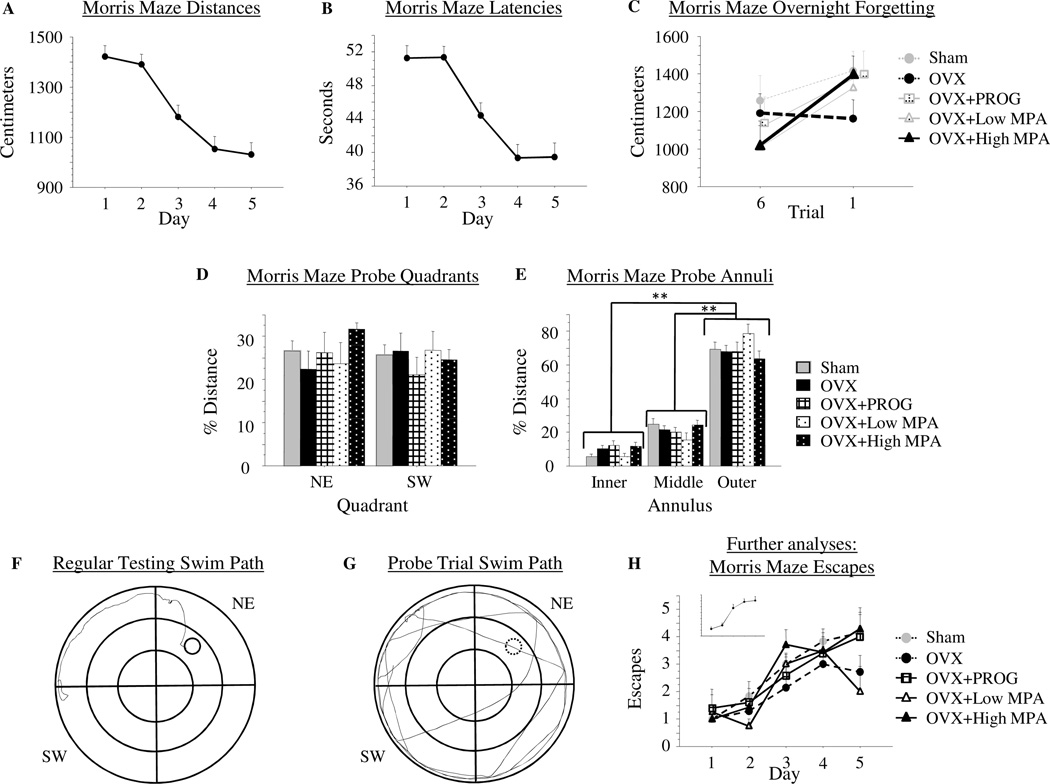Figure 2.
2a) Mean distance scores in centimeters (+SE) on Morris maze days 1–5. 2b) Mean latency scores in seconds (+SE) on Morris maze days 1–5. There were no group differences on distance swum or latency to locate the platform on the Morris Maze. 2c) Mean distance scores in centimeters (+SE) on Morris maze representing overnight forgetting. The figure depicts the collapsed total mean distance score from trial 6 of the previous day to trial 1 of the next day. The OVX+High MPA group significantly increased distance swum across the overnight interval while the OVX group did not; thus, OVX animals remembered the platform location from one day to the next, while OVX+High MPA animals did not. 2d) Mean % distance scores (+SE) spent in the quadrants of the Morris maze during the probe trial. There was no preference, as represented by % distance swum, for the previously platformed quadrant (NW) over the opposite quadrant (SE) by any group. 2e) Mean % distance scores (+SE) spent in the annuli of the Morris maze during the probe trial. All groups exhibited a preference for the outer annulus over the inner and middle annuli confirming animals were not using a motoric strategy of circling the platformed annulus (middle annulus) to solve the task. 2f) A swim path of an animal during regular testing. 2g) A swim path of an animal during the probe trial. 2h) Mean escape scores (+SE) on Morris maze days 1–5. To confirm that animals did learn the platform location, the number of trials within a day that each animal successfully found the platform (and thus escaped) within the 60 second time limit was quantified. Every group showed a significant increase in number of escapes across days. ** p < .0001

